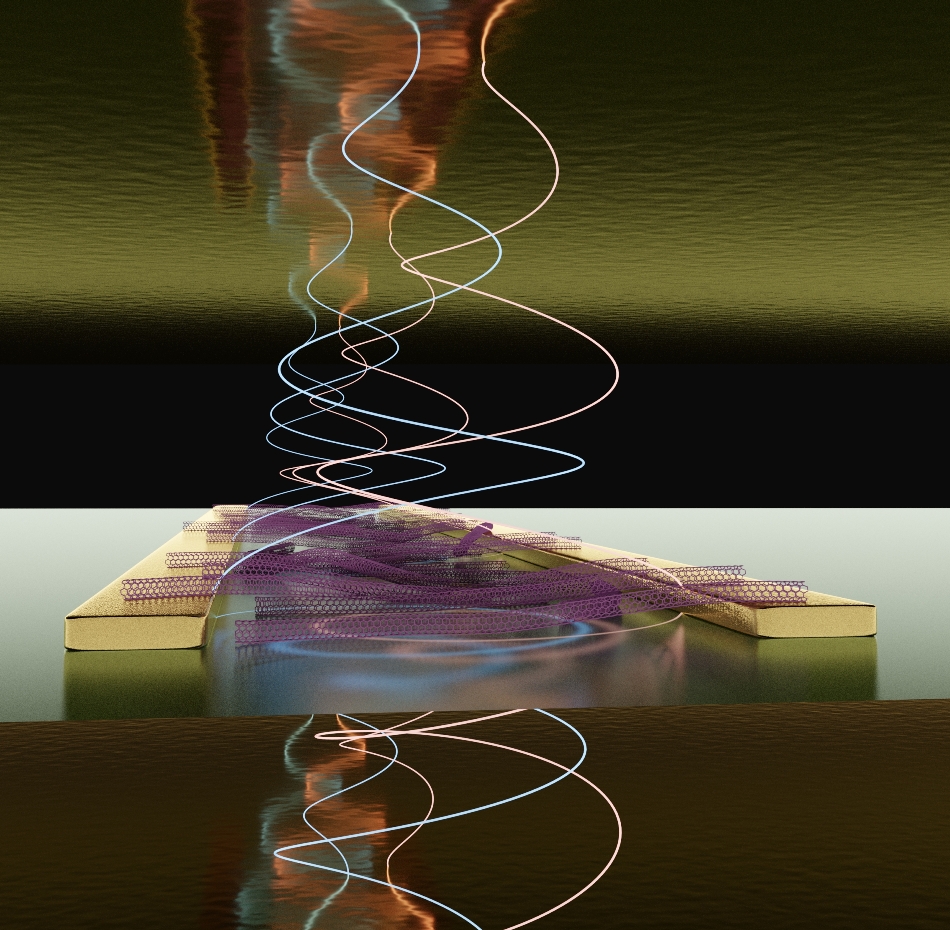Jul 25 2017
We can electrically synthesize light-matter quasi-particles in semiconducting carbon nanotubes. Physicists and Material Scientists at Heidelberg University (Germany) and at the University of St Andrews (Scotland) applied light-emitting and exceptionally stable transistors to achieve strong light-matter coupling and generate exciton-polaritons.
Such particles can open the door for innovative light sources such as electrically pumped polariton lasers, which can be produced by using carbon nanotubes. The outcomes of this study have been reported in the journal Nature Materials. These findings are the outcome of a research collaboration between Prof. Dr Jana Zaumseil (Heidelberg) and Prof. Dr Malte C. Gather (St Andrews).
 Artistic rendering of a light-emitting transistor with carbon nanotubes between two mirrors for electrical generation of polaritons. CREDIT: Dr. Yuriy Zakharko.
Artistic rendering of a light-emitting transistor with carbon nanotubes between two mirrors for electrical generation of polaritons. CREDIT: Dr. Yuriy Zakharko.
Recently, investigation of organic, carbon-based semiconductors for producing optoelectronic components has culminated in a range of applications, some of which are light-emitting diodes for high-resolution, energy-efficient TV and smartphone screens. In spite of the fast advancement in this field, developing an electrically pumped laser by using organic materials is extremely challenging. In order to get one step closer to this aim, Scientists from Heidelberg and St Andrews are looking for ways to couple matter and light in semiconducting carbon nanotubes, which are tube-shaped, microscopic structures formed of carbon.
Inducing excitons (matter) and photons (light) to rapidly interchange energy results in the formation of new quasi-particles—or exciton-polaritons—which can also emit light. When subject to specific conditions, these emissions can acquire the characteristics of laser light. Prof. Zaumseil described that exciton-polaritons are being tested at present as an innovative option for producing laser-like light from organic materials. Moreover, studies in this discipline have increased considerably.
The collaborators of Prof. Zaumseil and Prof. Gather demonstrated earlier that exciton-polaritons can be synthesized by using semiconducting carbon nanotubes. However, to stimulate the production of light-emitting quasi-particles, the Researchers employed an external laser. In the current experiments, the research team demonstrated that electricity can be used to produce these particles. In order to accomplish this, they created a light-emitting transistor including a dense layer of semiconducting carbon nanotubes enclosed between two metallic mirrors.
As the carbon nanotubes in the device offer higher conductivity and exceptional stability, current densities and consequently polariton densities were of the order of magnitude greater than any values reported earlier. Computations performed by Arko Graf, a PhD Student and a Lead Author of the research, demonstrate that an electrically pumped polariton laser can be realized in real time. Due to the fact that the emission of such light sources can be adjusted over a broad range of the near-infrared spectrum, this study proves to be highly significant for futuristic telecommunication applications.